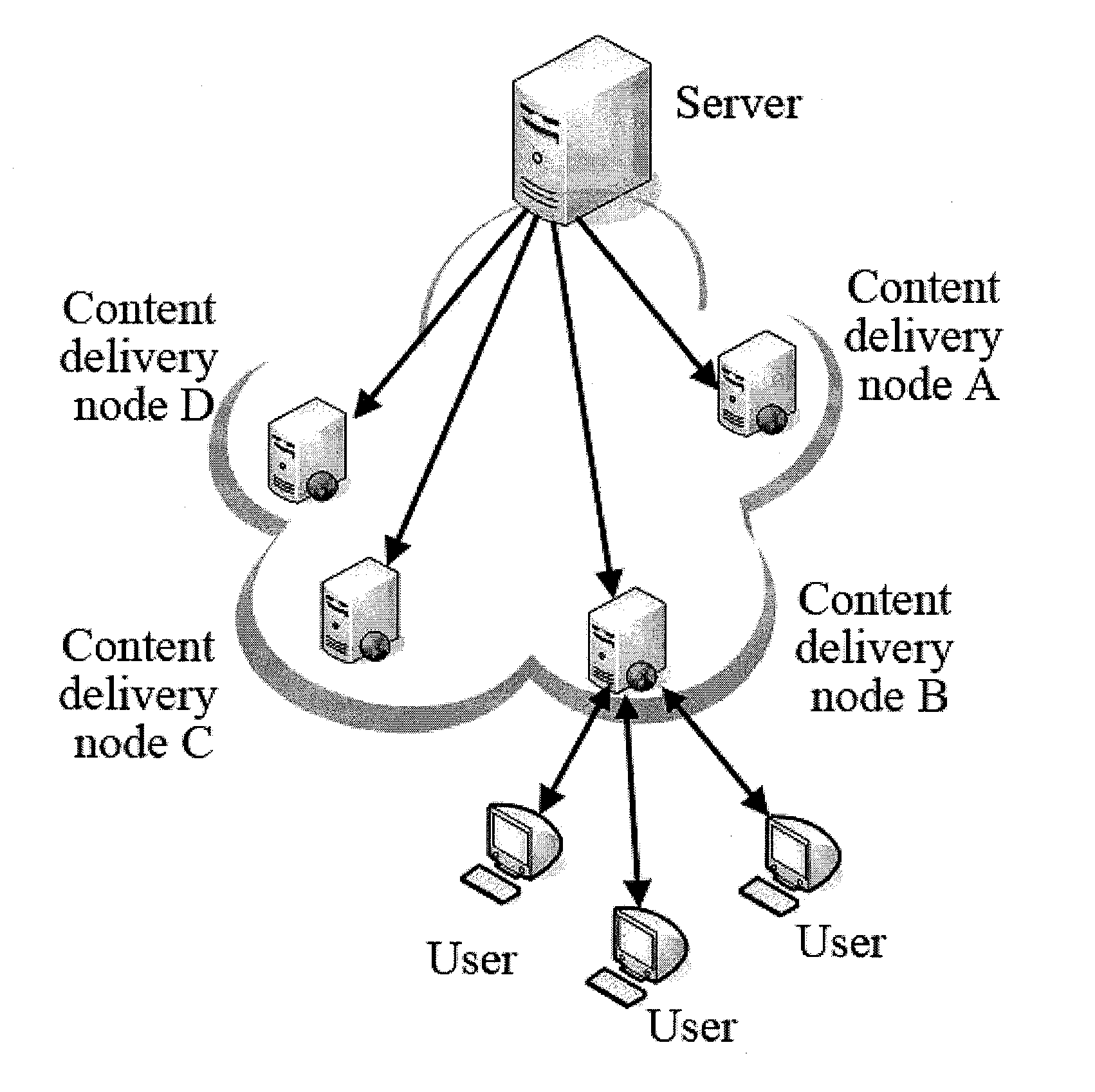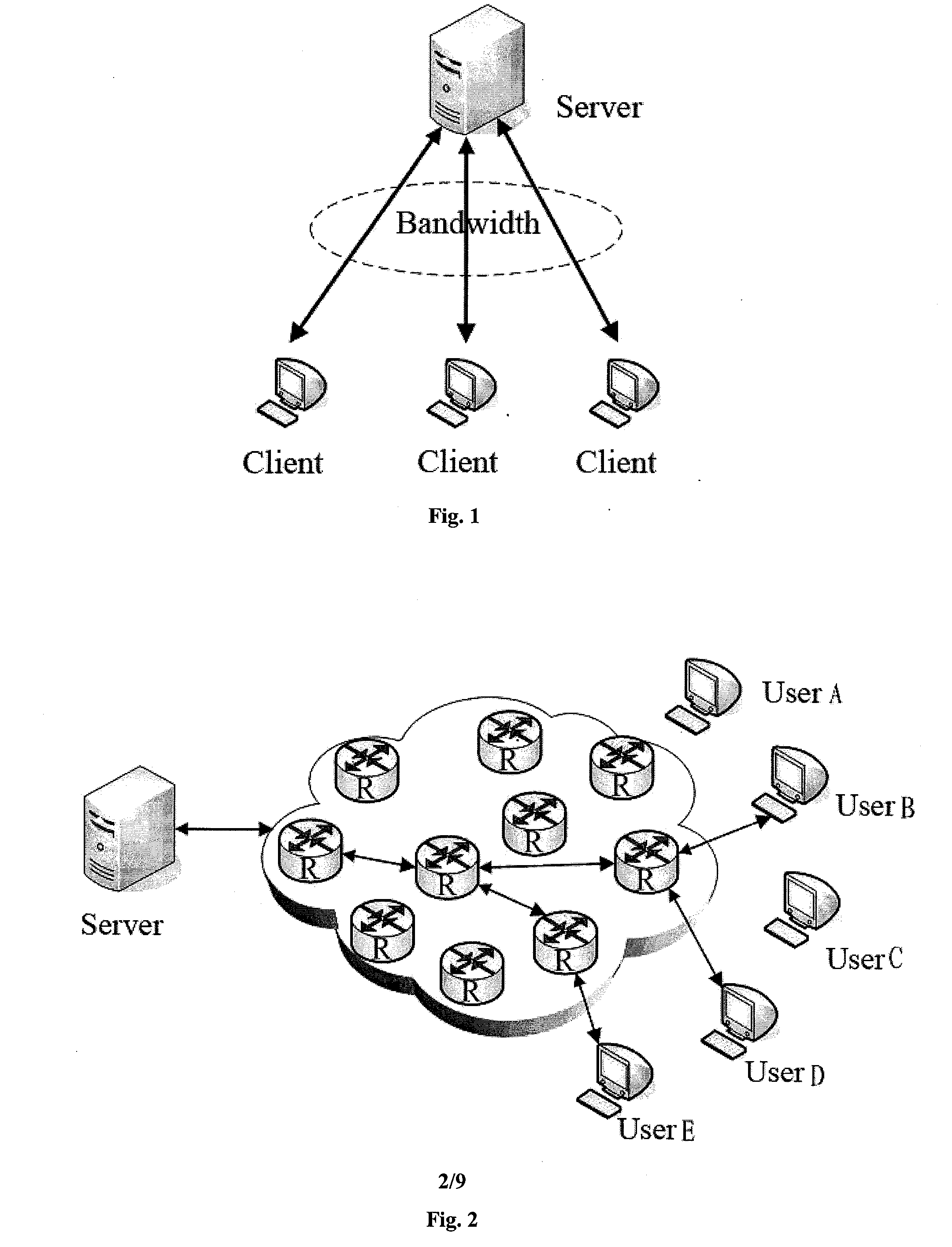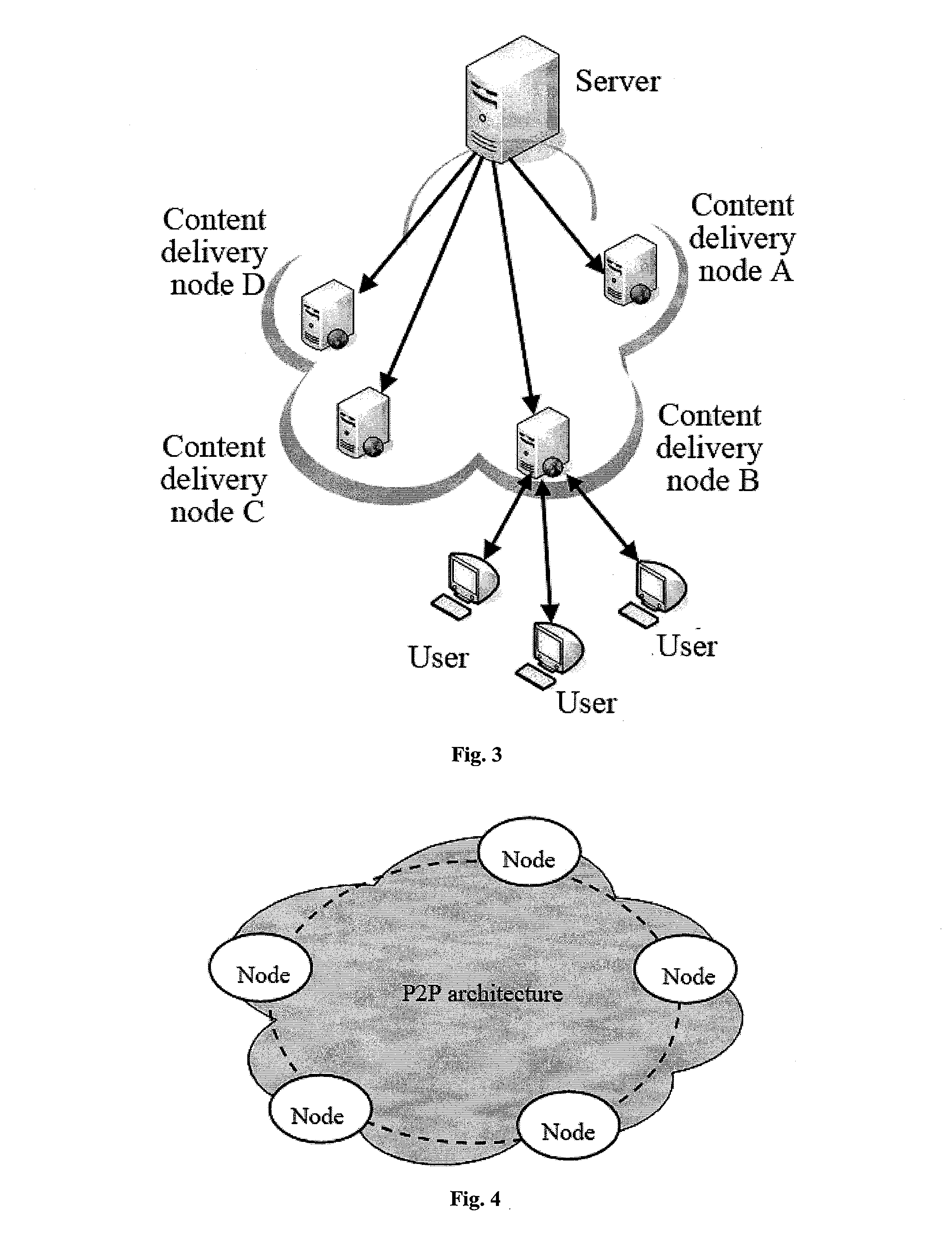System, method and device for delivering streaming media
- Summary
- Abstract
- Description
- Claims
- Application Information
AI Technical Summary
Benefits of technology
Problems solved by technology
Method used
Image
Examples
first embodiment
A First Embodiment
[0133]FIGS. 11 and 12 illustrate processes of retrieval of streaming media data from the hosting domain and from outside of the hosting domain respectively, which include the following operations S301-S311.
[0134]In the operation S301, an Ordinary Node (ON) transmits a query request carrying its own address information to a Web Portal Server (WPS) upon acquisition of a streaming media channel selected by a user.
[0135]In the operation S302, the WPS determines, from the address information included in the received query request, a hosting domain of the Ordinary Node (ON) transmitting the query request, retrieves information on a Super Node (SN) and a TR of the hosting domain, which includes at least IP addresses of the Super Node (SN) and the TR, and transmits the determined information on the Super Node (SN) and the TR to the Ordinary Node (ON).
[0136]In the operation S303, the Ordinary Node (ON), upon reception of the information on the Super Node (SN) and the TR of ...
second embodiment
A Second Embodiment
[0146]FIG. 13 illustrates a process of retrieving streaming media data by a mobile terminal through an Intermediate Ordinary Node (ION), which includes the following operations S401-S413.
[0147]In the operation S401, a mobile terminal, upon determining its hosting domain, transmits streaming media data request information to a TR in the hosting domain to inquire information on nodes (including ordinary nodes and a super node) possessing the requested streaming media data.
[0148]In the operation S402, the TR determines that the mobile terminal is incapable of a direct access, selects one of the ordinary nodes as an Intermediate Ordinary Node (ION) of the mobile terminal and returns information (including an IP address) on the selected Intermediate Ordinary Node (ION) to the mobile terminal.
[0149]In the operation S403, the TR inquires about whether the streaming media data requested by the mobile terminal is present in the hosting domain. That is, the TR inquires abou...
third embodiment
A Third Embodiment
[0162]FIG. 14 illustrates a process of sharing hot contents between Super Nodes (SNs), which includes the following operations S501-S504.
[0163]In the operation S501, a CTR counts requests for streaming media data over each streaming media channel in a domain server and then determines the streaming media data over the streaming media channel with a count of requests exceeding a preset value as hot contents.
[0164]In particular, streaming media data over a certain streaming media channel may alternatively be determined as hot contents according to some other experiential data.
[0165]In the operation S502, the CTR broadcasts information on the Super Nodes (SNs) possessing the hot contents to all of the Super Nodes (SNs) in the system.
[0166]In the operation S503, a Super Node (SN) not possessing the hot contents establishes connections to a part or all of Super Nodes (SN) possessing the hot contents according to the received information on the super nodes upon reception...
PUM
 Login to View More
Login to View More Abstract
Description
Claims
Application Information
 Login to View More
Login to View More - R&D
- Intellectual Property
- Life Sciences
- Materials
- Tech Scout
- Unparalleled Data Quality
- Higher Quality Content
- 60% Fewer Hallucinations
Browse by: Latest US Patents, China's latest patents, Technical Efficacy Thesaurus, Application Domain, Technology Topic, Popular Technical Reports.
© 2025 PatSnap. All rights reserved.Legal|Privacy policy|Modern Slavery Act Transparency Statement|Sitemap|About US| Contact US: help@patsnap.com



